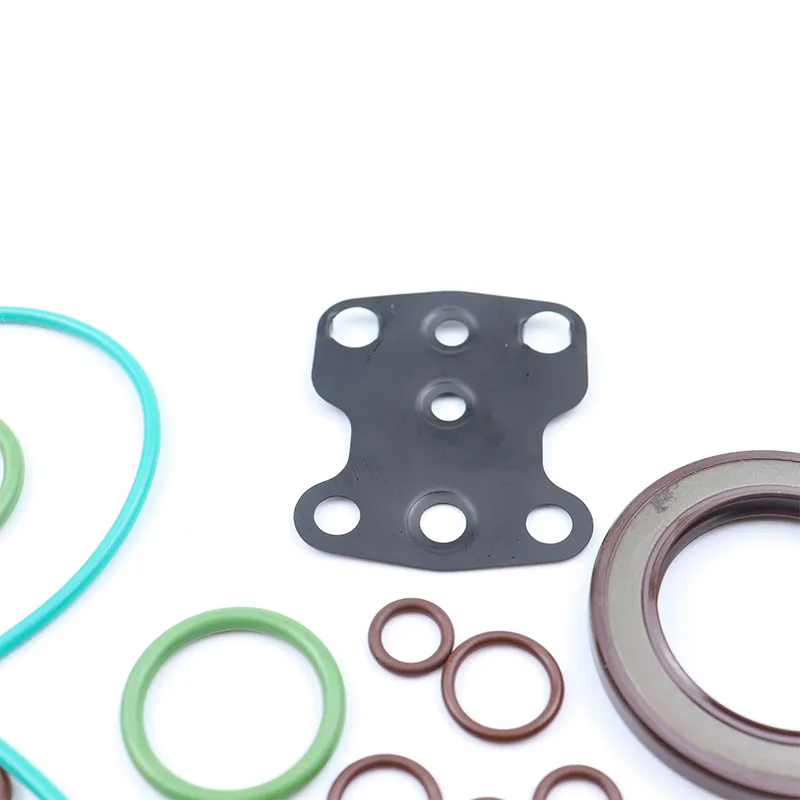តុលា . 02, 2024 19:48 Back to list
How to Change Seals in a Hydraulic Cylinder for Optimal Performance
Replacing Seals on a Hydraulic Cylinder A Step-by-Step Guide
Hydraulic cylinders are essential components in many machinery and hydraulic systems, providing powerful and controlled linear motion. Over time, wear and tear can lead to seal failure, resulting in leaks and diminished performance. Replacing the seals on a hydraulic cylinder is a crucial maintenance task that can restore its functionality and prolong its lifespan. This article will guide you through the process of replacing seals on a hydraulic cylinder effectively.
Understanding the Importance of Seals
Hydraulic seals play a vital role in preventing fluid leakage, maintaining pressure, and ensuring the smooth operation of the hydraulic system. Seals come in various types, including o-rings, rod seals, and piston seals, and are designed to withstand high pressure and temperature fluctuations. When seals fail, it can lead to loss of hydraulic fluid, reduced efficiency, and potential damage to the entire system. Therefore, timely replacement of worn or damaged seals is essential.
Tools and Materials Needed
Before you begin the replacement process, gather the necessary tools and materials
1. Tools - Wrenches or sockets (specific to your cylinder) - Screwdrivers (flathead and Phillips) - Pliers (needle-nose and standard) - Hydraulic cylinder seal kit (specific to your model) - Clean rags or paper towels - Plastic scraper or non-metallic pry tool - Torque wrench (if required for reassembly)
2. Safety Gear - Safety glasses - Gloves - Steel-toed boots (for protection)
Step-by-Step Replacement Process
1. Preparation - Begin by relieving the hydraulic pressure in the system to avoid accidents. Shut off the hydraulic power unit and follow the manufacturer’s instructions for depressurizing the cylinder.
replacing seals on a hydraulic cylinder

2. Disassembly - Remove the hydraulic cylinder from the machinery or equipment. This may involve detaching hoses and mounting hardware. - Place the cylinder on a clean work surface. Use rags to wipe away any dirt or fluid on the exterior of the cylinder.
3. Removing the End Caps - Using the appropriate tools, remove the end caps of the hydraulic cylinder. These caps usually require a wrench to unscrew. Be cautious not to damage the threads when loosening them.
4. Extracting the Piston - Carefully pull the piston out of the cylinder. Depending on the design, you may need to use a non-metallic pry tool to assist. Ensure that you keep track of the order of components and the orientation of the piston for correct reassembly.
5. Remove old seals - Carefully remove the old seals from the piston and the cylinder. Use a plastic scraper to avoid scratching the metal surfaces. Inspect the seal grooves for any damage or debris that could affect the new seals.
6. Install New Seals - Take the new seals from the hydraulic seal kit and lubricate them lightly with hydraulic oil. This helps them fit better and ensures a proper seal during operation. - Install the new seals carefully into their respective grooves on the piston and in the cylinder. Ensure they are seated evenly without twisting.
7. Reassemble the Cylinder - Insert the piston back into the cylinder, ensuring that it is oriented correctly. Replace the end caps and tighten them securely. Refer to the manufacturer’s specifications for torque requirements, if necessary.
8. Testing - Once the hydraulic cylinder is reassembled, reinstall it into the machinery. Reconnect the hoses and adjust any mounting hardware. - Before operating the equipment, check for leaks by running the hydraulic system at low pressure. If all is well, gradually increase the pressure and monitor for any leaks during operation.
Conclusion
Replacing seals on a hydraulic cylinder is a vital maintenance task that can greatly extend the life of your equipment. By following the steps outlined above and practicing safety precautions, you can successfully replace the seals and ensure your hydraulic system operates smoothly and efficiently. Regular maintenance, including seal replacement, is key to preventing larger issues and minimizing downtime in any hydraulic operation.
-
The Trans-formative Journey of Wheel Hub Oil Seals
NewsJun.06,2025
-
Graphene-Enhanced Oil Seals: Revolutionizing High-Pressure Oil Sealing
NewsJun.06,2025
-
Future of Hydraulic Sealing: Advanced Intelligent TCN Oil Seals
NewsJun.06,2025
-
Don’t Let a Broken TCV Oil Seal Ruin Your Day
NewsJun.06,2025
-
Bio-Inspired Dust Seals for Better Sealing Performance
NewsJun.06,2025
-
Biodegradable and Sustainable Hydraulic Seal Materials
NewsJun.06,2025
-
Top Oil Seal Solutions for Your Industrial Needs
NewsMay.22,2025
Products categories
















